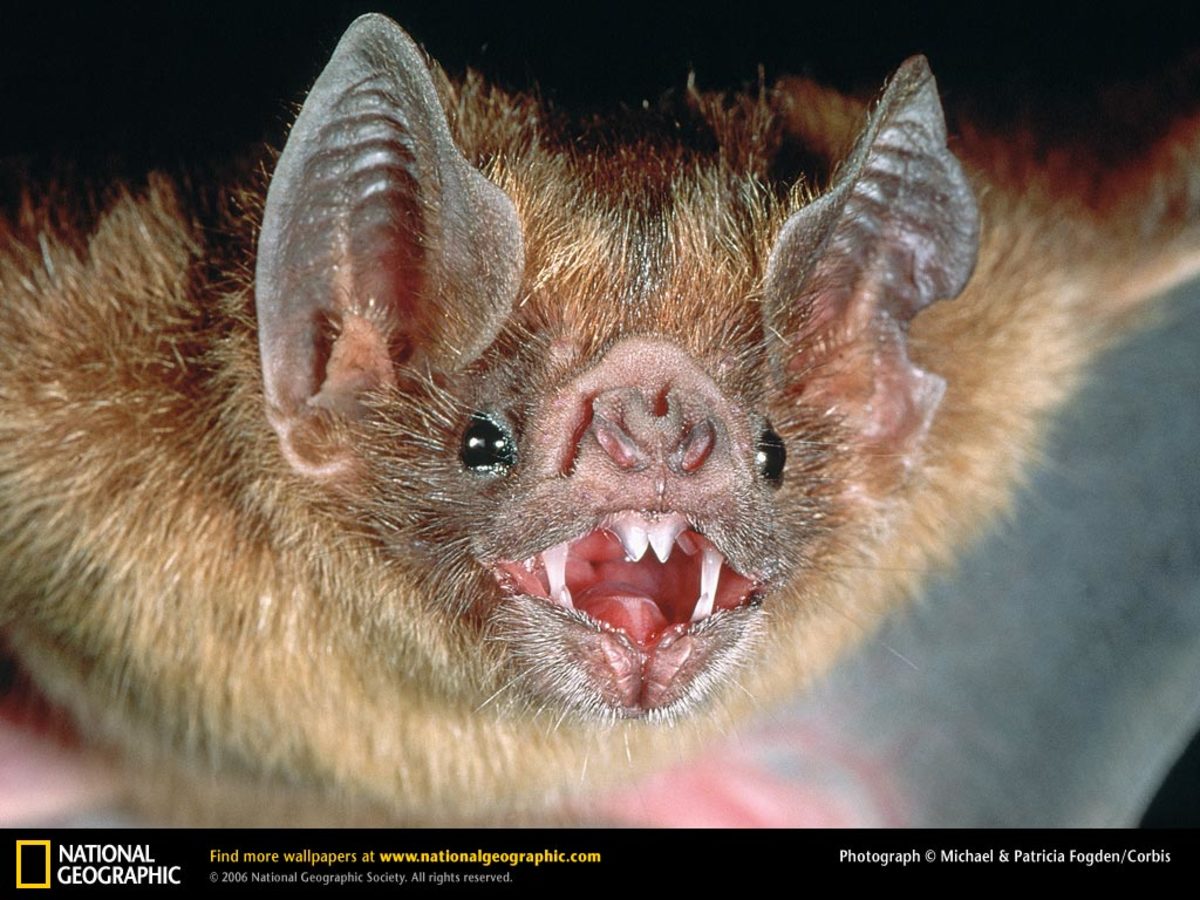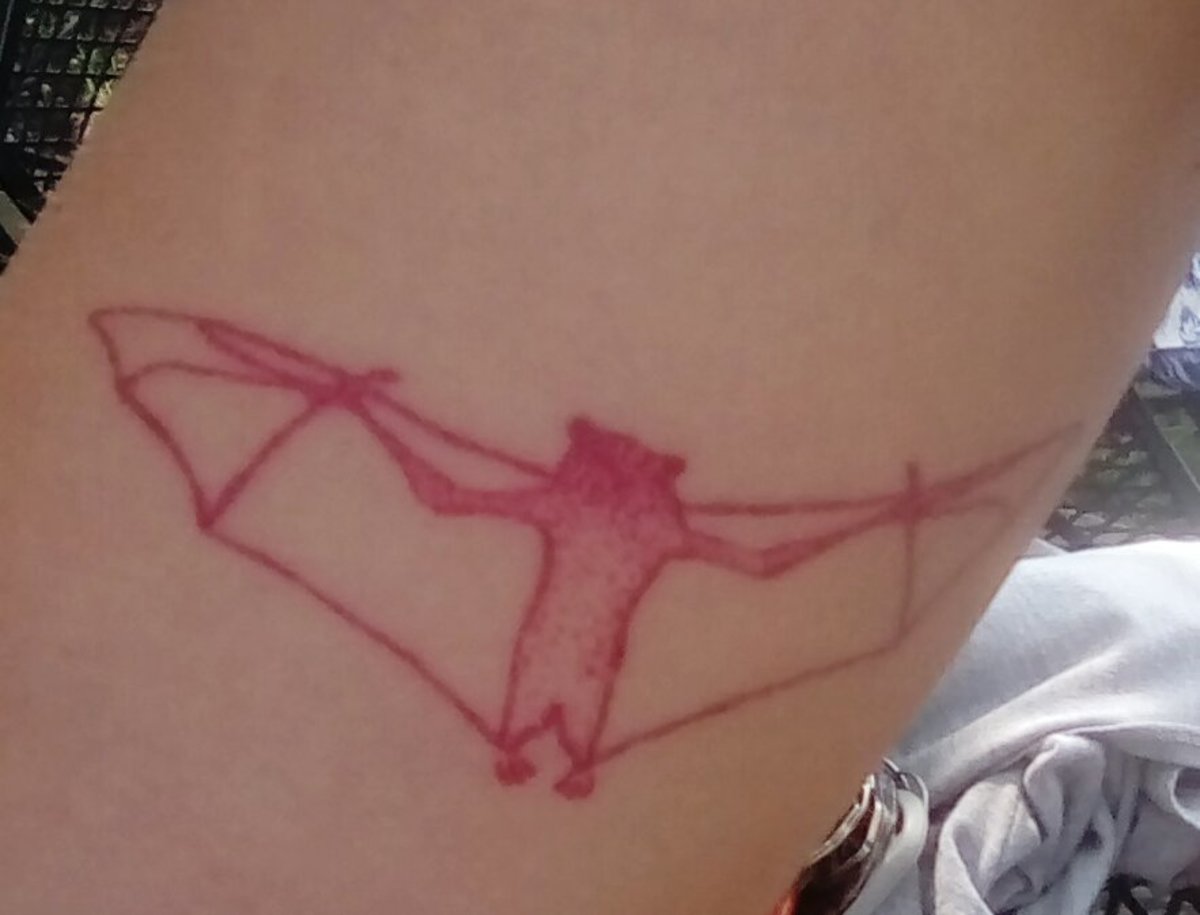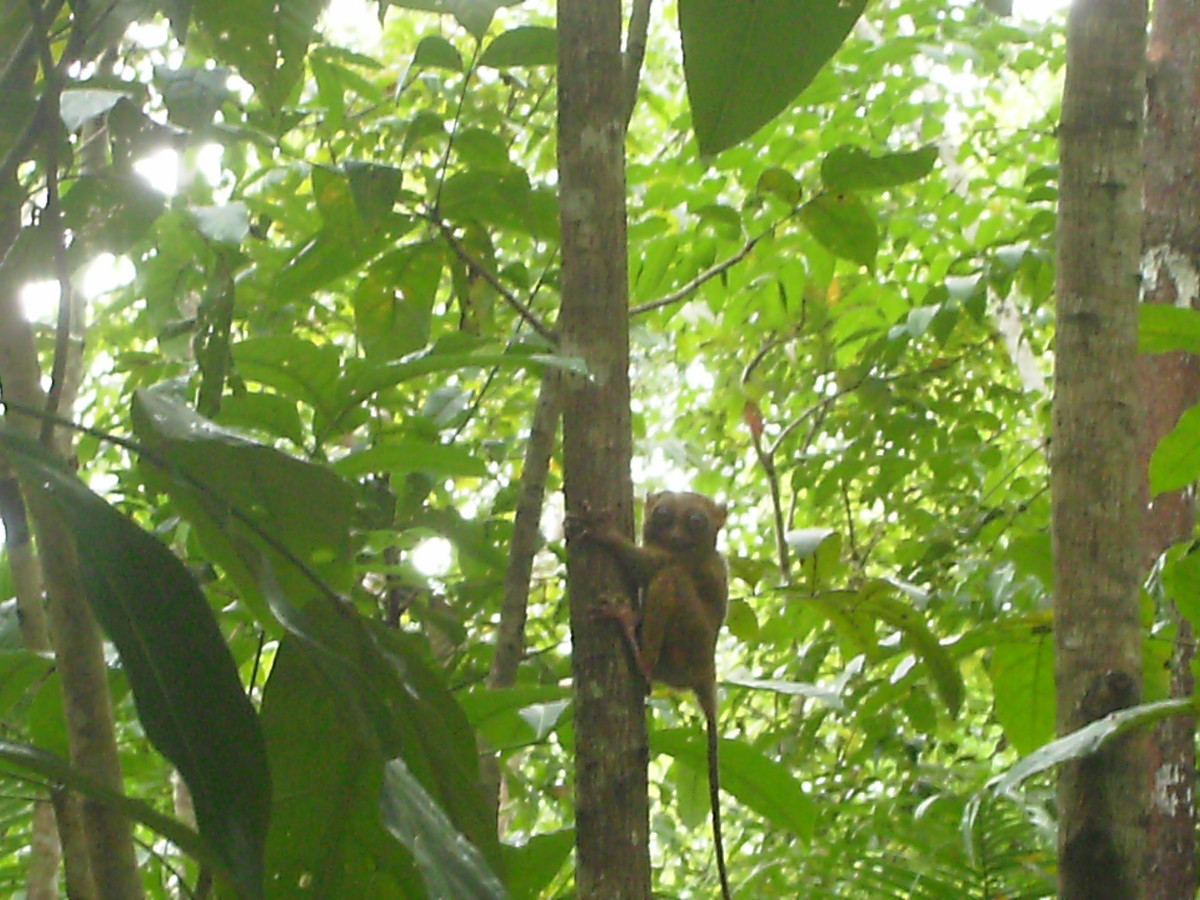Goin' Batty: Cool Bats That Rule the Night
Quickly, Robin... to the Batcave!
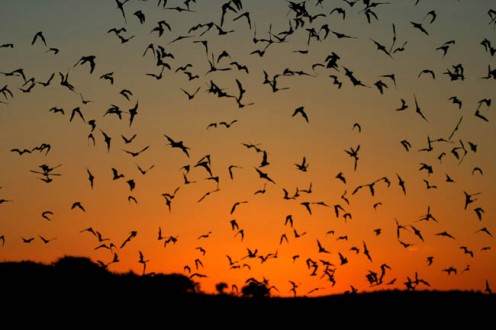
Bats have always been one of those creatures many people have mixed emotions about. On the one hand, they are seen as very cool, slightly wicked, and the perfect Halloween ornament.They have given us popular cultural icons such as The Batman, cartoon characters like Bartok (from the film Anastasia), and appear in the logos of products such as Bacardi Rum. They have filled our vernacular with phrases like "going batty" and "blind as bat".
But just let one try to make a nest in someone's hair (never happens) or have a little sip of their blood (possible but not likely) and you will see the true meaning of the word "panic". Maybe these mixed emotions are due to the combination of the cute, fuzzy bodies and mousy, inquisitive heads so common in bats combined with those leathery-looking bony wings that look like something you would see on a... well... bat out of Hell.
In this Hub we will take a look at a few different types of bats. With more than 1100 species to choose from, we have a wide array of choices. Bats make up around 20% of the known species of mammals in the world. This is possibly due to being the only mammal with the ability to fly, enabling bats to reach almost anywhere and adapt as needed to their changing environments. This has led to a great diversity among bats, perhaps more so than any other type of mammal.
Bats fall under one of two major classifications -- the megabats (less than 200 species) and the microbats (over 900 species). It is believed these two groups of bats evolved separately as there are several basic differences in the two groups including the shapes of their skulls and teeth, their neck vertebrae, the bones in their fingers, their hunting methods and the foods they eat. We will begin by taking a look at these two groups of bats.
A Quick Comparison of Bats
MEGABATS
| MICROBATS
| |
|---|---|---|
GENERAL SIZE
| Most larger than microbats
| Most smaller than megabats
|
APPROXIMATE SPECIES
| 186
| 930
|
EYES
| Large eyes
| Small eyes
|
SNOUT
| Longer snout
| Shorter snout
|
WINGS AT REST
| Wrapped around body
| Folded at sides
|
FACE
| Rodent like
| Strange looking
|
GENERAL DIET
| Pollen and fruit nectars
| Mostly insects
|
HUNTING METHOD
| Enhanced senses
| Echolocation
|
The Megabats
Megabats are also known as Fruit Bats, Flying Foxes or Old World Bats. The "Old World" name comes from the abundance of these bats in the tropical and subtropical areas of the "Old World" (i.e Africa, Europe and Asia). There are no megabats in the New World (i.e. North and South America) other than those found in zoological parks.
Generally speaking, megabats are larger than microbats, but there are some species of megabats that are smaller than some species of microbats. Megabats have excellent eyesight as well as enhanced hearing and a strong sense of smell. They use these tools to hunt for fruit and nectar. Their teeth are designed for crushing fruit from which they drink the juice and eat the pulp, rarely swallowing any large pieces. Many species feed on nectar from flowers or consume only the juice from the fruit they crush.
For those who believe in the evolutionary theory of creation, it should be noted that megabats are theorized to have branched off from the early primates, making them distant cousins to human beings. However, those more inclined to a religious view of creation may feel this is a somewhat insulting theory considering bats' association with things considered spooky and perhaps even evil.
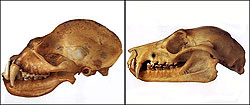
The Microbats
Microbats, on the other hand, feed on mostly insects and can be found just about anywhere on Earth other than the Arctic and Antarctic regions and a few isolated islands. Their senses of sight, hearing and smell are not as strong as megbats and they use echolocation to locate their prey, often taken in flight. The misconception that these bats use echolocation for navigation likely led to the misleading phrase "blind as a bat" though in reality there are no blind bats other than pups which are indeed born blind.
There are five times as many species of microbats as there are species of macrobats. It is considered likely that microbats developed from a shrew-like mammal that had the ability to climb trees, but there is no conclusive proof of this as there are missing links in the evolutionary fossil records that leave the microbats' origin in question. Researchers theorize this lack of a fossil record may be due to the bats' relatively fragile skeletons not preserving well.
Grey-headed Flying Fox (Pteropus poliocephalus)
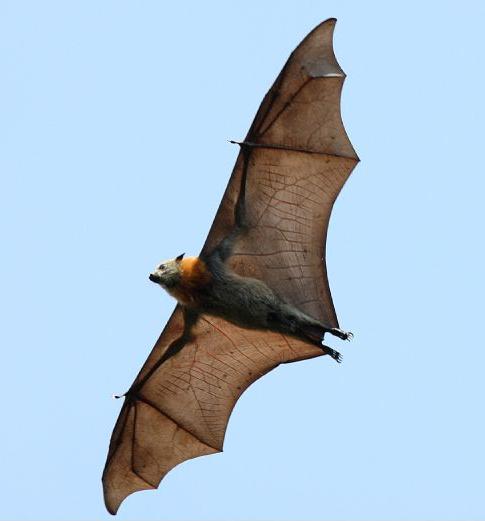
The Grey-headed Flying Fox is the largest bat in Australia, the only place this species is found. It lives primarily along that continent's south-eastern coast, mainly in rainforests, wooded areas and swamps, but also can establish roosts in vegetation in urban areas. A colony at the Royal Botanic Gardens in Sydney contains over 20,000 bats at its height during the summer! The Grey-headed Flying Fox is a fruit bat and lives on pollen, nectar and fruit. It is the only fruit bat to inhabit subtropic rainforests.
They are somewhat migratory but do not migrate in any particular pattern, choosing the direction of their moves based on what is most beneficial to the colony at the time instead. Migration is related to food supply and colonies in areas with a steady food supply do not migrate. These amazing bats also seem to sense when predators are in the vicinity and will delay leaving the roost to feed when threats are near.
Mindoro Stripe-faced Fruit Bat (Styloctenium mindorensis)
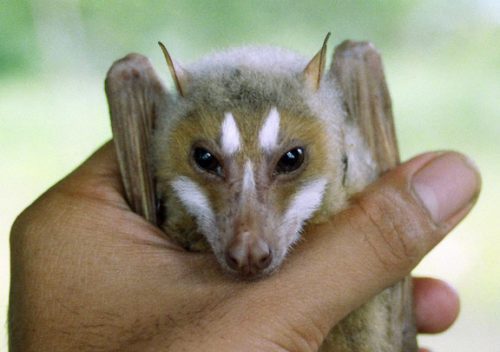
WARNING: Do not attempt to handle a bat unless you have proper training. A bat bite or scratch can be serious and in rare cases even fatal. And though less than 1% of bats carry rabies, most of the rabies cases each year are caused by bat bites.
|
|---|
The Mindoro Stripe-faced Fruit Bat was discovered on the island of Mindoro in the Philippines in February 2006. Though residents had described the bat to researchers previously, this was the first time a live specimen was captured. The bat has been nicknamed "The Flying Fox" because of its distinctive facial features, but is not considered one of the Flying Foxes. It is feared the bat may be threatened or even at risk of extinction due to loss of habitat as well as being hunted locally as a source of food. As it is a relatively recent discovery, however, more research is needed to learn the bat's true status.
Townsend's Big-eared Bat (Corynorhinus townsendii )
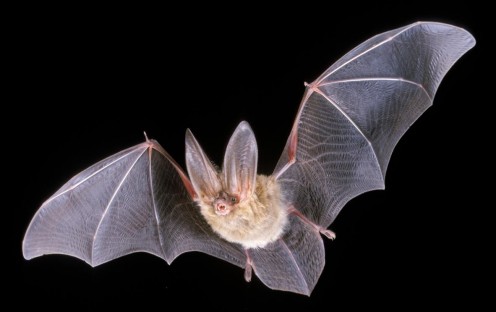
Townsend's Big-eared Bat is a cave-dwelling microbat that ranges from the western parts of Canada and the United States down to southern Mexico and can also be found in isolated spots in the eastern United States. They hibernate during the winter and mate shortly after waking from hibernation. The females and male then form separate colonies for the summer months.
It is believed that Townsend's Big-eared Bat consumes almost nothing other than moths as its diet. They will fatten up before entering the extended period of hibernation when low metabolism will carry them over until waking from the deep sleep. The bat's hibernation is not necessarily an uninterrupted stretch, however, as they may wake and move around in the cave or move to another cave entirely possibly in search of a more temperate location.
Spectacled Flying Fox (Pteropus conspicillatus)
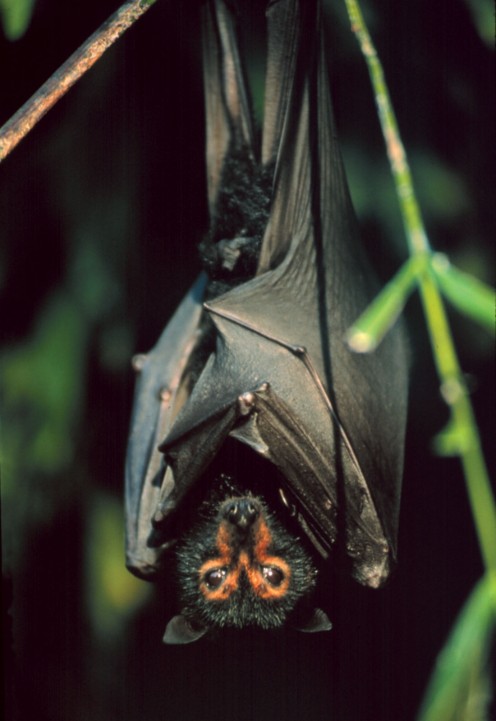
Living in the tropical rainforests of New Guinea and north-eastern Australia, the Spectacled Flying Fox goes against the bat stereotype by preferring to roost in the upper canopy of trees in full sunlight. No colony is known to exist more than five miles away from a tropical rainforest. Their diet consists mainly of rainforest fruits but they also eat some flowers found along the banks of rivers and other bodies of water. Juvenile Spectacled Flying Foxes stay with the mother while young and can occasionally be seen clinging to the mother while she is in flight.
Honduran White Bat (Ectophylla alba)
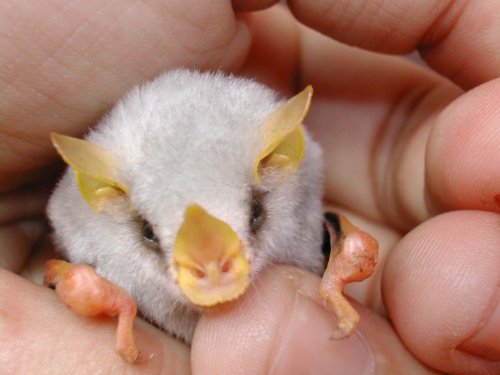
WARNING: Do not attempt to handle a bat unless you have proper training. A bat bite or scratch can be serious and in rare cases even fatal. And though less than 1% of bats carry rabies, most of the rabies cases each year are caused by bat bites.
|
|---|
With its snow white fur and yellow nose and ears, the Honduran White Bat is one of the cutest bats you are likely to find. At under two inches, it is a very small bat. They are one of the tent-making bats, forming small colonies of a few bats under large leaves where they cut the stem to make the leave fold over and form a tent. Each group consists of one male and a harem of females and many feel this is a colony for this particular bat. However, other researchers feel the colony is actually made up of several of these individual groups.
Angolan Epauletted Fruit Bat (Epomophorus angolensis)
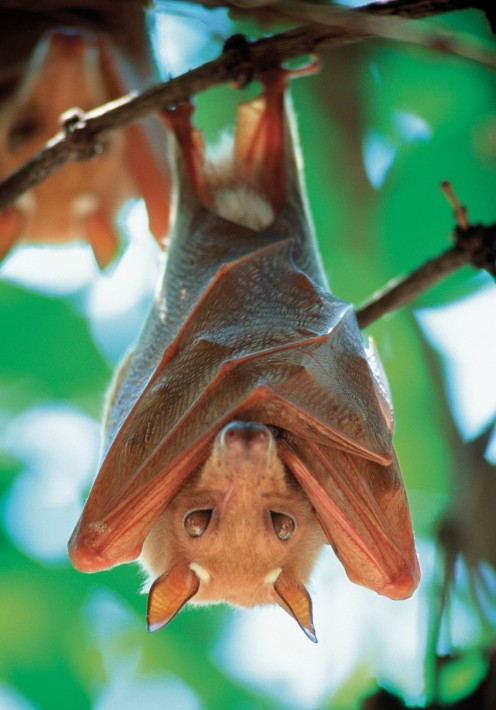
The Angolan Epauletted Fruit Bat's conservation status is listed as Near Threatened due primarily to loss of habitat. The bat roosts in Acacia trees and these trees are often used as a source of wood for heat. They are found in a relatively small area in both the wet and dry savannahs of the western African nations of Angola and Namibia. Because it is uncertain if the species may actually inhabit other regions as well, its conservation status is considered questionable as it may be more abundant than currently known.
Daubenton's Bat (Myotis daubentonii)
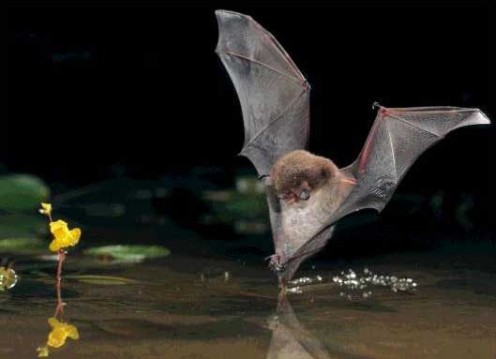
Snatching its prey from the surface of bodies of water with its feet, the Daubenton's Bat can be fascinating to watch while feeding. Once its prey is caught, it will flip it up into its mouth without missing a beat as it proceeds with the hunt. These efficient hunters are hungry little fellows, often increasing their body weight by more than 50% while feeding. The bat is found in Europe and Asia ranging from Great Britain to Japan. It makes its home in caves and tunnels in woodland areas near rivers and canals but may also find a suitable roost in a hollowed out tree.
Proboscis Bat (Rhynchonycteris naso)
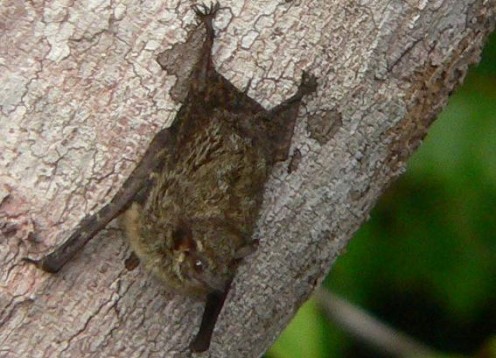
The Proboscis Bat is found in southernmost parts of Mexico down into the northern half of South America. It lives in wetlands and always roosts near water. Because its tail extends from a membrane between its rear legs, it is referred to a sheath-tailed bat. This bat is excellent at camouflage, blending in easily with the lichens and mosses on trees where they roost. They are small bats, reaching a length of only about two inches.
Rodrigues Flying Fox (Pteropus rodricensis)
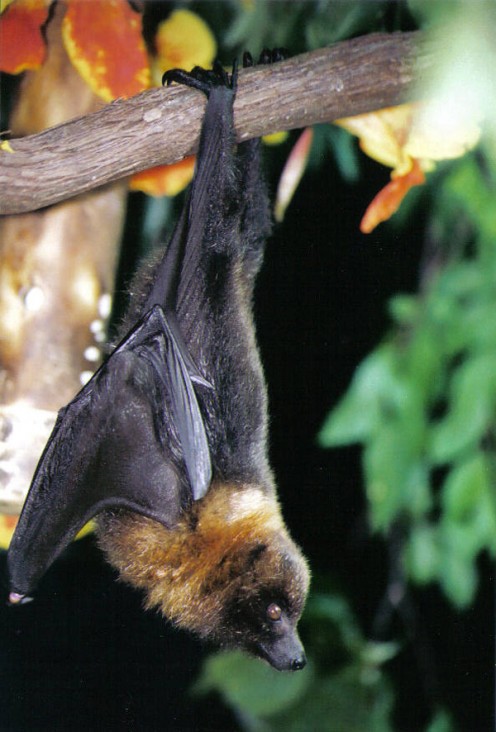
The Rodrigues Flying Fox can only be found on the island of Rodrigues. I know, I know... that's what I said! Where the heck id Rodrigues? I guess the best way to describe it is "way off the western coast of Africa". It is a rather small island and due to storm damage to its limited habitat as well as being hunted locally by humans for food, this little fellow is currently considered to be critically endangered. There are several colonies that have been successfully established in zoos, but the population in the wilderness continues to decline.
The one silver lining to this cloud is that researchers have learned quite a bit about the bats in captivity. For instance, it has been observed that dominant males will gather a harem of up to ten females with whom he roosts and mates while younger males and less dominant males will roost in a separate area at the edge of the colony.While this may seem unfair to those less fortunate males, it is this selective breeding that keeps the colony at its strongest.
For a closer look at these amazing creatures and their adorable pups, take a look at the following video from the Oregon Zoo...
Common Vampire Bat (Desmodus rotundus)

Did you ever hear that urban myth about bats drinking human blood? Well, watch your neck because it is no myth! They much prefer larger animals like cows and horses, attacking them while they sleep in the darkest part of the night. But vampire bats -- the only mammal to subsist exclusively on blood -- have been known to feed, or more often attempt to feed, on humans as well.
They have a difficult time attacking people as humans tend to wake more easily and be more resistant to their attacks than livestock. Generally, humans have the ability to fight the bats off when they attempt to feed. But vampire bats can at times cause a significant health hazard such as in the summer of 2010 when over 500 people were bitten by bats in Peru, some of which spread rabies resulting in the deaths of several children.
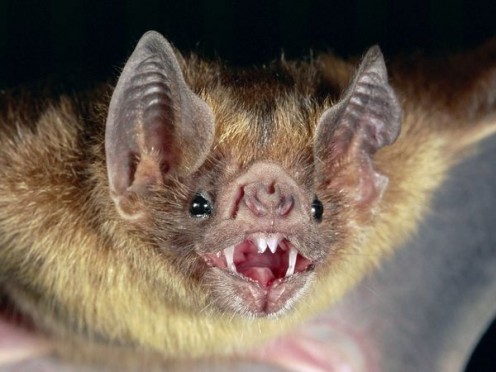
Vampire bats have a heat sensor on their nose that points them to a spot on their prey where blood flows closest to the surface. The bat either lands lightly on their prey or lands on the ground and approaches on all fours, launching their assault from the ground instead of the air. Once they bite their victim, they the lap up the flowing blood which is less likely to clot due to the chemical makeup of the bat's saliva. A colony of just 100 Common Vampire Bats can drink the blood of 25 cows (or about 75 humans) in a year! And colonies of more than a thousand bats have been discovered.
A few more vampire bat facts...
- In addition to the Common Vampire Bat shown here, there are two other species that feed exclusively on blood -- the White-winged Vampire Bat and the Hairy-legged Vampire Bat -- but they prefer the blood of wild birds and domestic fowl.
- Vampire bats that do not feed for two or three days will die from starvation. To prevent this, since as many as 10% of the bats may be unable to feed each night, other bats in the colony will feed the unfed bats through regurgitation.
- The anticoagulant nature of the vampire bat saliva will often make a wound appear worse than it is as the blood continues flowing after the bat stops feeding and may spread over a greater area than usual.
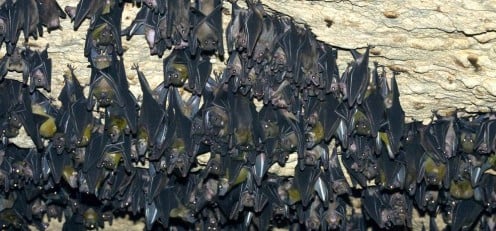
Just the Facts: Bat Trivia to Impress Your Friends
- Bats have been observed swimming! Though it does not seem to be part of their usual behavior, bats will take a dip to retrieve food that falls into the water or in other stressful situations.
- Bats live a relatively long life compared to other small mammals. Many reach the age of 20 and have been documented reaching the age of 30! Most mammals their size have average lifespans in the single digits.
- The smallest bat is Kitti's Hog-nosed bat (also known as the Bumblebee Bat) with a wingspan of about six inches and a body slightly over one inch long. The largest bats are various species of Flying Foxes with wingspans reaching six feet or more.
- Juvenile bats of some tree-roosting species will fly out to hunt with older bats but rest along the way in "nursery trees" until old enough to complete the full hunt.
- Bats are essential to a healthy eco-system due to their ability to spread seeds and pollen and especially control insect populations. Declining numbers of bats worldwide are causing an increase in the amount of pesticides used to control insects. This use of pesticide is harmful to the environment and further damages the eco-system.
- Though less than 1% of bats are thought to carry rabies, most cases of rabies in humans come from bat bites. Additionally, many cases of rabies that are of unknown origin are traced to bats though the patient has no recollection of a bat bite. This is believed to be because many bat bites are initially thought to be insect bats by the victims who then give them very little thought.
Glossary
Chiroptera This Latin name for bats means "hand wing".
Colony Group of bats that live, hunt and mate with one another.
Echolocation The method of locating objects by using echos made by sounds that are emitted. This is how microbats locate the insects they feed on. (This is basically how active sonar works as well.)
Endemic Naturally present in a certain area or environ.
Hibernate A deep state of rest that lowers metabolism drastically allowing stored energy to be consumed at a greatly reduced rate.
Night roost A resting place bats will use while hunting at night for a variety of purposes including eating captured food, digesting food, socializing or simply resting.
Nose-leaf Leaf shaped skin flap around the nose of some microbats used to assist in echolocation.
Roost (1) The place where bats take shelter to rest between hunts and breed. (2) A collection of bats at rest.

